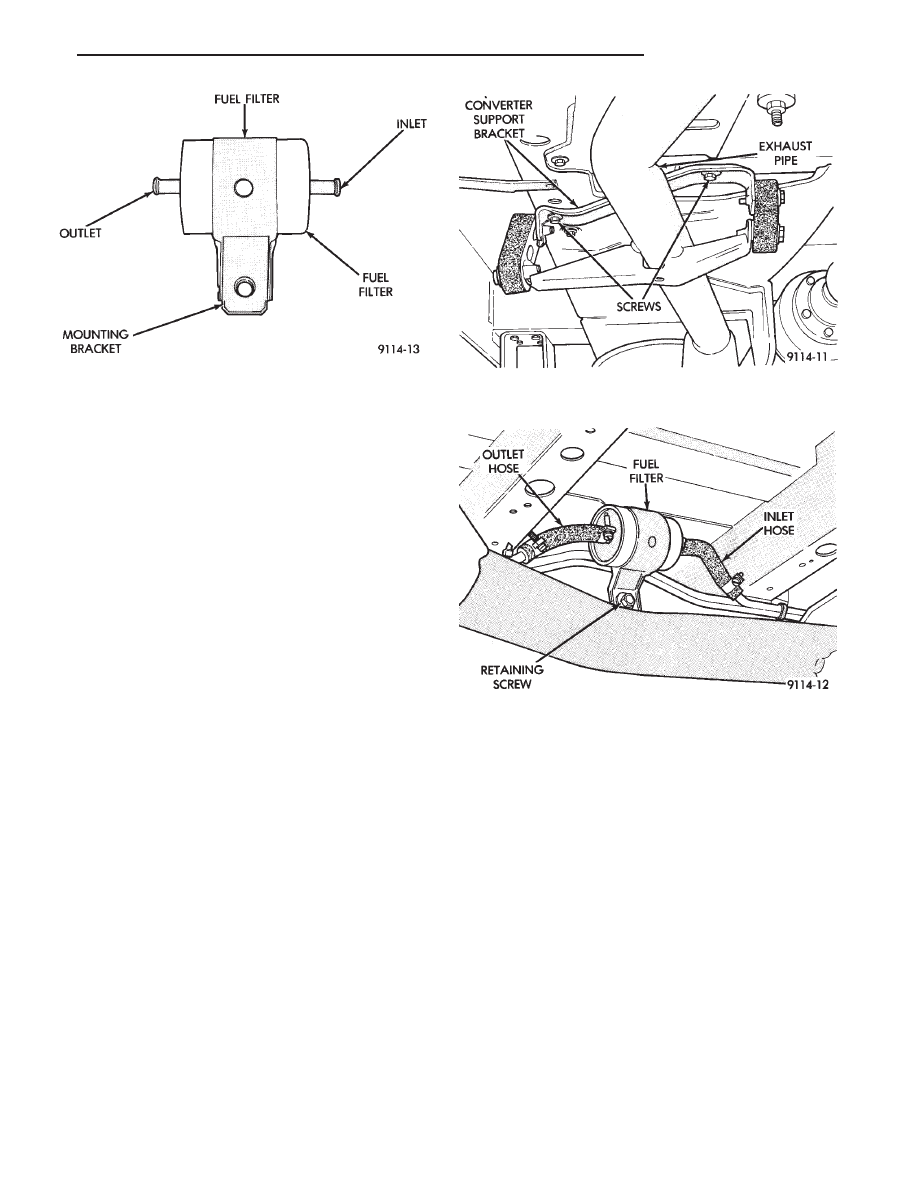Chrysler Town & Country/Voyager, Dodge Caravan, Plymouth Voyager. Manual - part 16

INSTALLATION
(1) Install inlet hose on fuel tube and tighten new
clamp to 1 N
Im (10 in. lbs.) torque.
(2) Install outlet hose on filter outlet fitting and
torque new clamp to 1 N
Im (10 in. lbs.).
(3) Position filter assembly on rail and tighten
mounting screw to 8 N
Im (75 in. lbs.) torque.
FUEL FILTER—ALL WHEEL DRIVE
REMOVAL
WARNING: FUEL SYSTEM PRESSURE MUST BE RE-
LEASED BEFORE THE FUEL FILTER IS REMOVED.
(1) Perform Fuel System Pressure Release proce-
dure.
(2) Remove converter support bracket (Fig. 19).
(3) Remove exhaust pipe heat shield.
(4) Loosen outlet and inlet hose clamps on filter (Fig.
20).
CAUTION: Wrap shop towels around hoses to catch
any gasoline spillage.
(5) Remove filter retaining screw and remove filter
assembly from rail.
(6) Remove hoses from fuel filter. Discard clamps.
INSTALLATION
(1) Loose install inlet and outlet fuel hoses to fuel
filter.
(2) Position filter assembly on rail and tighten
mounting screw to 8 N
Im (75 in.lbs.) torque.
(3) Tighten new fuel hose clamps to 1 N
Im (10 in.
lbs.) torque.
(4) Install exhaust pipe heat shield.
(5) Install exhaust pipe support bracket.
CHASSIS FUEL TUBES
Fuel system component locations and chassis fuel
tube routings are shown in Fig. 21.
Fig. 18 Fuel Filter—Front Wheel Drive
Fig. 20 Fuel Filter—All Wheel Drive
Fig. 19 Support Bracket—All Wheel Drive
.
FUEL SYSTEM
14 - 11